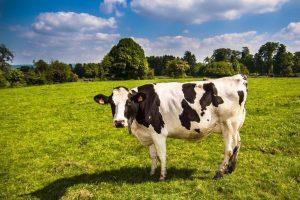Analysis by Quality Meat Scotland (QMS) has revealed that slaughter prices for both prime and cull cattle have enjoyed increases of more than 12% year-on-year, despite a reduce in beef production.
Cull stock saw a 15% increase year-on-year, outstripping a 12% increased for prime stock at the same period.

During May, UK abattoirs handled over 2% more cull cows than last year, however, there have been indications from price-reporting abattoirs and auction throughputs that the volume of cull stock they are receiving has dropped slightly in recent weeks.
The head of economics services with QMS, Stuart Ashworth, commented on the decline: “While this is slightly concerning in terms of the outlook for the size of the suckler herd in the future, there are indications from census and BCMS data that there are more beef-sired heifers currently on farms that could be used for breeding than there were last year.”
Overall, over the first four months of 2017, Great British and Scottish calf registrations have dipped by around 0.5% on last year.
In Europe, cull cattle prices are also looking strong, as in many major beef-producing countries, prices are 5-10% higher than this time last year.
“In some countries, for example Germany, cull cow prices have increased by more than prime stock prices,” said Ashworth.
“However, in Ireland cull cattle prices have cooled in recent weeks and are currently less than 1% up on last year having been running around 5% higher for most of the year.”
Higher prices in Ireland were reportedly achieved despite Irish cull cattle slaughter numbers being up 12.5% over the first half of the year.
Strong prices for both prime and cull stock across Europe were attributed to demand exceeding supply, as there has been increased demand across the continent for manufacturing beef.
A shift towards lighter carcase weights in the UK and Ireland, although not for cull cows, has reduced beef production, which would support producer prices in these countries.
Furthermore, a 17% growth in beef exports outside the EU in the first four months of the year is also thought to have supported the wider beef market, along with a useful growth in markets associated with lower value cuts, as well as a 6% reduction of imports over the same period.
Ashworth noted that, historically, UK cull stock slaughter volumes are typically at their lowest in May and June, and peak in October and November.
This story was originally published on a previous version of the Meat Management website and so there may be some missing images and formatting issues.















